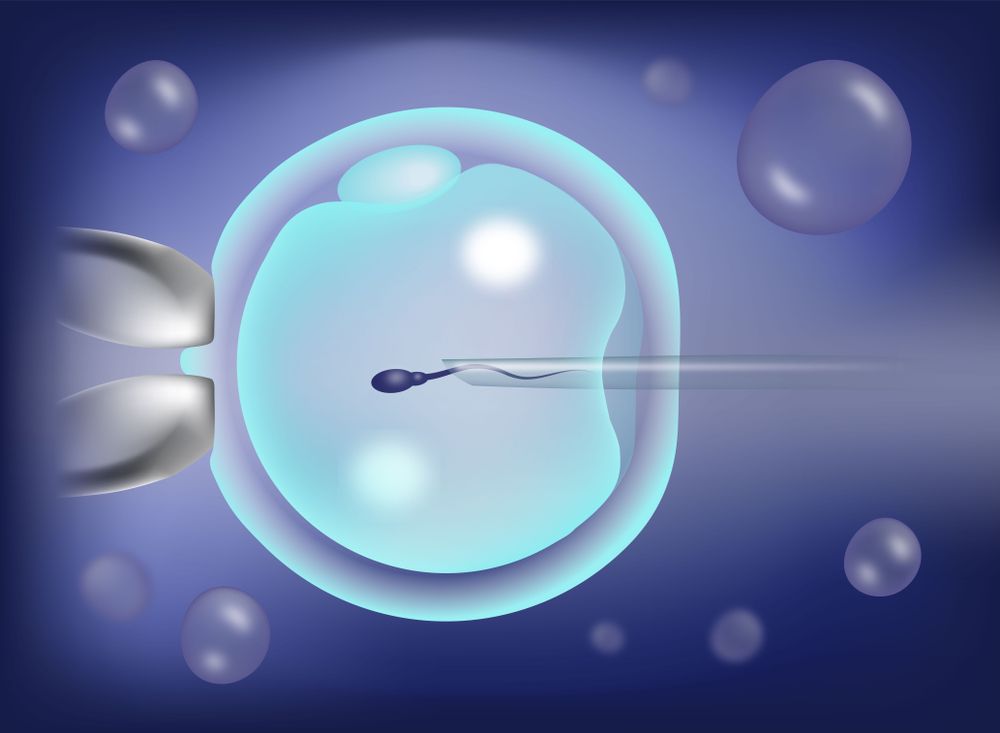IVF ICSI with PGD
Entering the world of parenthood is a very personal and often difficult process. In situations where traditional methods may not be sufficient for couples facing difficulties associated with infertility or genetic disorders, assisted reproductive technologies (ART) offer a glimmer of hope and promise. Three such developments—intracytoplasmic sperm injection (ICSI), preimplantation genetic diagnosis (PGD), and in vitro fertilization (IVF)—have revolutionized reproductive care and opened up a world of new opportunities for prospective parents.
Let’s explore the world of IVF, ICSI, and PGD to understand how they work and how they might help you fulfill your dream of starting a family. In vitro fertilization, or IVF, is a medical procedure that helps individuals who are having problems becoming pregnant.

Intracytoplasmic Sperm Injection (ICSI)
Among the several IVF techniques, Intracytoplasmic Sperm Injection (ICSI) is unique and particularly helpful for couples facing male infertility issues. ICSI involves carefully injecting a single sperm into the egg via a micromanipulation technique.
With this novel technique, fertilization can occur even in cases of severe male factor infertility, where traditional IVF techniques might not be successful. ICSI has significantly improved the chances of conception for couples facing challenges linked to sperm, signaling a new chapter of hope in their journey towards becoming pregnant.
When to Recommend Intracytoplasmic Sperm Injection (ICSI)?
In certain cases, your healthcare physician might recommend ICSI treatment:
- If the number of sperm appears to be noticeably declining.
- When sperm show reduced motility or poor morphology (abnormal form).
- Following unsuccessful IVF treatments that produced little to no egg fertilization.
- When sperm counts are abnormally low and surgical sperm retrieval is necessary; when obstructions preventing sperm release occur.
- When treating patients with lower-quality frozen sperm, especially if they were cryopreserved as a prophylactic measure or following surgical retrieval.
- When evaluating embryos for genetic disorders, where sperm adhesion to the egg’s surface may affect the test’s accuracy.

Preimplantation Genetic Diagnosis (PGD)
Preimplantation genetic diagnosis (PGD) is a cutting-edge method that makes it possible to screen embryos for genetic defects before implantation into the uterus during in vitro fertilization (IVF). Using this technique, a cell or cells are removed from the embryo and examined for specific genetic disorders or chromosomal abnormalities.
PGD helps choose embryos free of defects, reducing the chance that genetic diseases will be passed down to future generations. It is especially helpful for couples who have a family history of hereditary ailments or themselves carry genetic disorders.
Pre-implantation genetic diagnosis, or PGD, is the process of analyzing the genetic composition of the embryos by doing genetic testing on the embryo cells created during an IVF cycle. It helps determine which embryos are best suited for fertilization. PGD specifically refers to genetic testing carried out on embryos to determine whether the embryos possess similar genetic defects that have been detected by one or both genetic parents.
Who Should Get Pre-Implantation Genetic Diagnosis Done?
For couples who may pass on a known genetic abnormality to their offspring, preimplantation genetic diagnostic (PGD) is recommended. In order to minimize the risk of genetic defects being inherited and the requirement for late-term pregnancy termination (after a positive prenatal diagnosis), only healthy and normal embryos are put into the mother’s uterus.
Three main kinds of illnesses are advised for PGD:
- Sex linked genetic diseases.
- Chromosomal abnormalities.
- Monogenic deficiencies.
Doctors can identify which embryos have the genetic problems and which do not by using PGD testing. By using this test, medical professionals can increase the likelihood of a healthy pregnancy by choosing the best embryo to put into the uterus.

When is PGD Conducted in an IVF Cycle?
As part of PGD, every developing embryo has a biopsy after growing for five or six days. The genetic material that was taken out of the embryo cells is analyzed to look for anomalies. The medical and genetics team will choose the best embryo for implantation after analyzing a variety of markers in the examined embryos.
Advantages of PGD
Future advancements in technology may make it possible to completely remove some hereditary disorders (such as Tay-Sachs disease, cystic fibrosis, Huntington disease, and X-linked dystrophies). Even though there may not be a comprehensive cure for many genetic diseases anytime soon, using PGD to prevent the condition is still preferable to waiting for a speculative one.
Genetic disease screening before implantation can prevent the necessity for pregnancy termination after prenatal testing (amniocentesis or chorionic villus sampling), which can be an incredibly difficult and upsetting decision.
In the past, people who have genetic disorders or who are aware that they are carriers frequently choose not to procreate in order to prevent the sickness from being passed on to future generations. These couples can now conceive a kid free from their particular condition thanks to PGD.
Key Genetic Diseases Screened Using PGD
Identifying and excluding embryos with genetic abnormalities at the pre-implantation stage is one of the main goals of PGD.
These illnesses include, among others:
- Amyotrophic Sclerosis Lateral
- Dystrophies Muscular
- Beta Thalassemia
- Breast Cancer
- Fibrosis
- Cystic Hemophilia
- Cancer of the Prostate
There’s little doubt that this testing helps couples get a safe pregnancy.
At Venus IVF, we offer expert fertility treatments for men and women, helping you achieve your dream family.
Contact Info
- +977 976-1682874
- +977 976-1682874
- info@venusivf.com
- Venus Hospital, Second floor- IVF department Mid baneshwor Kathmandu, Nepal
- 12-5 PM : Sunday to Friday (except Saturday)
